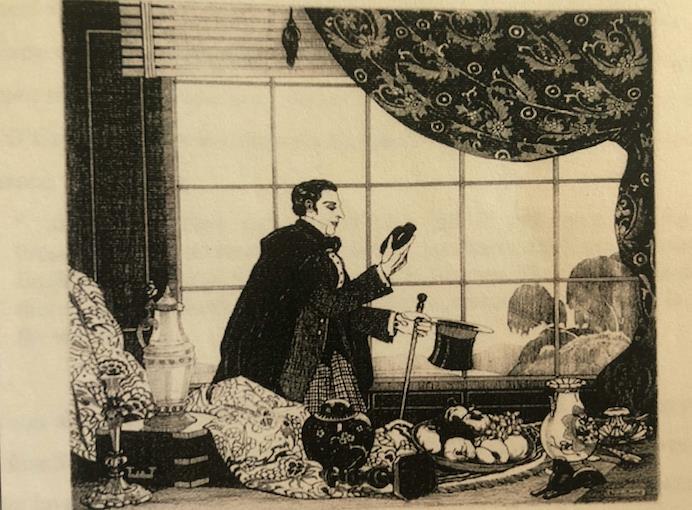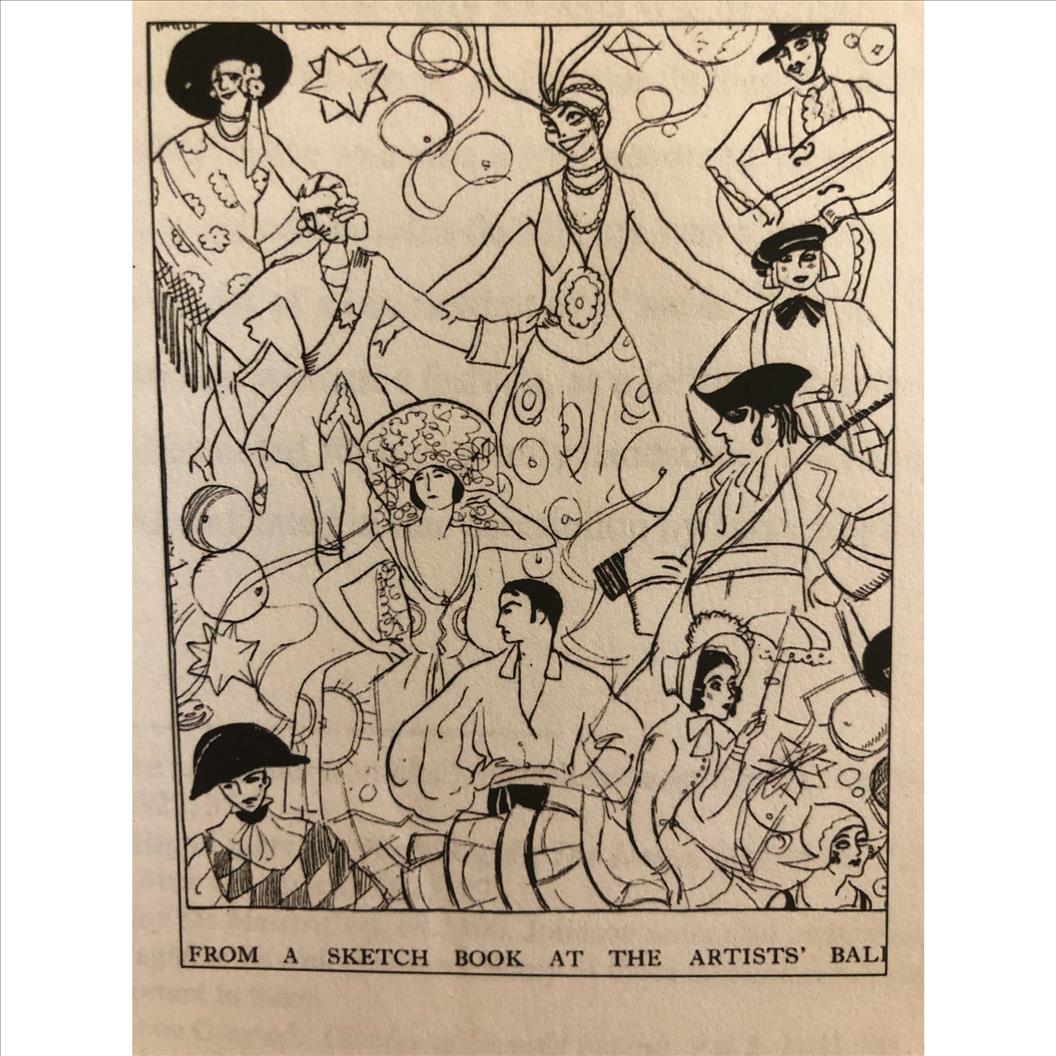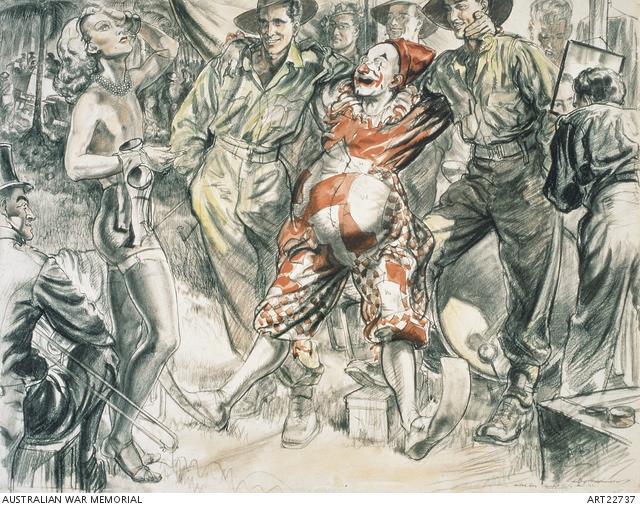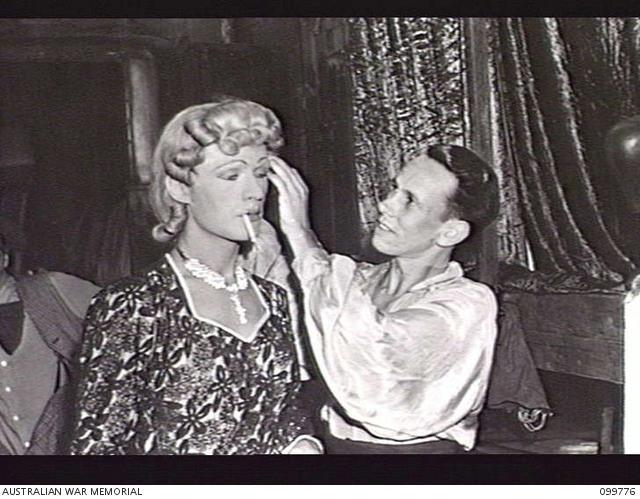Author:
Peter McNeil
(MENAFN- The Conversation) It's Sydney Lesbian and Gay Mardi Gras festival time. LGBTQI people are enjoying what some call 'gay or lesbian Christmas'. It's not quite the same in the era of COVID, but a contained version of the famous street parade will be beamed into living rooms on Saturday.
The public face of Mardi Gras, which began in 1978 with a protest parade, is remarkable in a nation that has been deeply prejudiced toward gay and lesbian people. Part of the power of Mardi Gras for older generations was that it removed queer sexualities from the 'secret' confines of semi-legal bar and club locations and private parties to the public street. Being on the front page of the newspaper no longer meant you might be going to jail.
Still, Australian queer people did not suddenly emerge in the 1960s and 70s, the years of gay liberation. Where were they before and how can they be identified? Because male homosexuality was criminalised, much can be discovered from the press and crime reports. Letters, memoirs, diaries, art, photographs and the memories of gay, lesbian, and transgender people also provide clues.
From the bush to the boudoir
The Australian colonies were marked by a shortage of women and the dominance of homosocial environments. Francis Forbes, former Chief Justice in the colony, when questioned at the so-called Molesworth inquiry into convict transportation in the 1830s , had to admit Sydney 'had been called a Sodom' . Sodomy in the Tasmanian coal mines was also the subject of a British government inquiry .
Read more: Debauchery on the fatal shore: the sex lives of Australia's convicts

Andrew George Scott, alias Captain Moonlite. Wikimedia Commons There is evidence of what historian Robert Aldrich calls 'conjoined' same-sex male couples in 19th-century Australia, including the famous bushranger Captain Moonlite (Andrew George Scott). As he waited to be hanged in Darlinghurst Jail in 1880, he wrote of his fellow ranger James Nesbitt: 'We were one in heart and soul, he died in my arms and I long to join him …'
Homosexuality was often associated with foreigners and cosmopolitan affectation. George Francis Alexander Seymour, future Marquess of Hertford, lived in Queensland briefly around 1895. Likely inspired by international dance sensation Loie Fuller , he shocked locals by wearing sequins and a veil for 'skirt dancing' performances in front of 'kanakas' (South Pacific men coerced to work in the canefields).

George Francis Alexander Seymour, future Marquess of Hertford, dancing. National Library of Australia. William Lygon , later 7th Earl Beauchamp — the governor of New South Wales for a short time from 1899 — travelled with a retinue of good-looking footmen and lavished praise on the natural grace of Australian athletes and lifesavers.
He was disgraced as a homosexual by his brother-in-law in 1931 and became the subject of the famous statement by King George V: 'I thought people like that always shot themselves.'
He subsequently inspired the famous novel by Evelyn Waugh, Brideshead Revisited.
Interwar life: fashion and fancy
In the inter-war years, there was a marked queer presence in the worlds of Australian art, design, entertainment and retail. This was the period of art deco and Australian 'genteel modernism'. Art Deco (called moderne or futurist style at the time) was inseparable from fashion and fantasy and frequently derided as an effeminate style — it has even been called the 'International Style in drag'.
Cultural nationalist and the director of Melbourne's National Gallery of Victoria from 1936–1941, J. S. MacDonald, claimed this type of art and design had been promoted by women and 'pansies', meaning homosexual men.
Smith's Weekly, The Bulletin and the New Triad mocked the 'wasp waists' and 'goo goo boys' who worked in retail and enjoyed theatre.
Some queers worked as entertainers or drag queens. In NSW this was a summary offence of indecency (still used by police in the 1970s). Drag queens and cross-dressers had to wear male underwear or else risk arrest.
Cross-dressing was also associated at the time with street prostitution . A police mugshot from 1942 shows two cross-dressed male sex workers wearing women's coats, one with huge rabbit-fur-trimmed sleeves, as well as a turban and makeup. The men still look very male and defiant, suggesting a part of their sexual charge came from precisely this lack of ambiguity; it was clear they were not women.
Clearly annoyed, one of the pair remarked to the tabloid Truth:
Gay male artists and commercial designers in Sydney lived their queer lives discreetly on moderate incomes. The flower painter Adrian Feint , who lived in Elizabeth Bay, produced many bookplates depicting languid young men with a queer mood.
His disguised self-portrait etching of a dandy entitled The Collector (1925) carried the suggestion of eye and lip makeup, depicting archaic Edwardian dress, a top hat, a cane, plaid suit and cape.

Adrian Feint's disguised self portrait. author provided His remarkable cover for the upmarket magazine The Home (July 1929) featured a 'Rum Corps' officer whom Feint transformed into a languid, heavily made-up beauty, recalling both the Ballets Russes, who were touring Australia, and the famous queer movie star Rudolph Valentino.

Cover of The Home journal, Volume 7 No.10. July 1 1929, designed by Adrian Feint. Wikimedia Commons The culture of hedonism, promiscuity, heavy drinking, pub life and mixed-class socialising that characterised life in the colonies pervaded Australian gay life until recently. Pubs and clubs were crude, brash and fun. Bohemian ideas were also important. All sorts of behaviour were excused at the Artists' Balls , which were held in Sydney from the 1920s until 1964. Gay balls were often accompanied by a blind orchestra (not unusual at the time due to war injuries) so the goings on could not be observed.
A 1925 sketch by Mandi McCrae of one such ball in The Home, September 1925, delineates a transsexual, two men with arms akimbo, and several gender-indeterminate figures. The press loved running stories of cross-dressed men whose dresses were so large they had to arrive in delivery vans. One told of a live bird in a cage worn as a Marie Antoinette-style headdress.

A sketch of an Artist's Ball from The Home, September 1925. Author provided Urban subcultures
In the interwar years, a queer urban subculture coalesced for the first time in Sydney around art deco sites and buildings: city hotels, the Archibald Fountain by night for cruising, and the new high-density housing of Kings Cross, Potts Point, Darlinghurst and East Sydney.

High density housing helped foster the bachelor life. Peter McNeil Boonara, a middle-class block of flats in Woollahra, built by a widow and a 'spinster' in 1918, was let only to women and one male artist, William Lister Lister . Restaurants catering to a homosexual clientele included Madame Pura's Latin Cafe in the now demolished Royal Arcade.
Many Australian artists and writers became expatriate in this period to escape wowserism, censorship and the anti-art tenor of Australian society. They included Nobel winning novelist Patrick White, who conducted one of the great same-sex love affairs with Manoly Lascaris from 1941 until White's death in 1990. White spent his youth in England, writing from a desk designed by the queer interior decorator and later famed artist Francis Bacon.
Back home in the 1940s, a group of queer artists, dancers and designers lived in Merioola, a run-down mansion in Edgecliff known then as 'Buggery Barn'. They included artists Donald Friend and Justin O'Brien , acclaimed costume designer Loudon Sainthill and his partner, the theatre critic and gallery director Harry Tatlock Miller . The landlady was the butch looking Chica Lowe . She provided a set-like stage on which residents performed their counter-cultural lives.
Wealthier queers conducted their lives at private dinners, where ironic cross-dressing provided entertainment. They used camp girls' names such as Connie, Simone, Zena and Maude. Cross-dressing was a popular diversion for groups of gay friends, who hired country and beach houses for private parties around the country.
A queer sensibility can tell us as much as a queer identification at a time when non-binary sexuality could lead to financial ruin for both women and men.
Australia's first interior decorator, Margaret Jaye, was almost certainly a lesbian, and one of the nation's first industrial designers, Molly Grey, was photographed in 1935 with a Sapphic hairstyle and severe dress of oversize mannish collar, bow tie, and cuffs. Interior design, being connected to domesticity and the home, was one of the few professions where married women and gay men could work undisturbed.

Molly Grey photographed in Potts Point Sydney by Harold Cazneaux circa 1935. State Library of New South Wales The author Eve Langley (who changed her name to Oscar Wilde by deed poll in 1954) and her sister June cross-dressed in country Gippsland when young, where they were known as the 'trouser women'. Eve continued to wear mannish attire in her old age in the Blue Mountains.
Sydney: from port to gay city
World War II was a watershed for Australian queer identity. Historians such as Garry Wotherspoon have noted how port cities such as Sydney and San Francisco threw large numbers of young men together, away from their families, in new types of housing such as bachelor flats. These cities were the ones that later developed the first large homosexual communities, often in neglected inner-city areas, in the 1960s and 1970s.
World War II also threw into the mix female impersonators who performed for the forces. The Australian armed forces had 20 concert party groups and gave 12,000 shows in Australia, the Middle East and the Pacific. The Kiwi (New Zealand) Concert Party wore drag made from muslin, dishcloths and silver paper as well as real fashions. They continued to perform for nine years after the war ended.

Official war artist Roy Hodgkinson captured a moment of revelry among Australian military forces at a New Guinea Concert Party in 1942. Australian War Memorial Academic Chris Brickell has made the important point that although many of the performers pretended to be co-opted for their roles, most were more than willing. Their drag acts 'drew from, and subsequently inspired, gay civilians' own drag performances'.

Lance-Corporal J. C. Robinson adjusting the wig of Private G. J. Buckham, female impersonator in the dressing room of the Kookaroos Concert Party, Torokina, Bougainville, 1945. Australian War Memorial Read more: 'I didn't know that world existed': how lesbian women found a life in the armed forces
1950s Australia saw an increasing witch hunt around queer sexuality, fuelled by the churches, the demands of the police and Cold War anxiety about Communist inflitration. The tabloid press continued earlier sensational reporting: ('Degenerate Dressed up as a Doll … St Kilda Sensation—Man-Woman Masquerader') with headlines such as 'Police War on this Nest of Perverts'. Even the famed 1950s American muscle culture magazines were banned under strict censorship here.
Lesbian butch and femme subcultures had emerged by this time, in which one partner was styled in a hyper-feminine way, the other donning trousers and shorter hair. Writer Gavin Harris notes that Lillian Armfield , NSW's first policewoman, claimed department stores blacklisted lesbians who were trying to 'recruit' from among their 'innocent' customers.
Blak and queer
Queer Indigenous people have been prominent for several decades in art forms such as dance, where they contribute to new formulations of ideas of 'blak beauty,' blak being a term consciously deployed by contemporary queer visual artists, including Brook Andrew .
The biography and survival story of Indigenous dancer and choreographer Noel Tovey (born 1934) charts a trajectory from abandonment and abuse to a life as a successful actor and dancer in London in the 1960s. Here Tovey mixed with gay circles and gained resilience and self-esteem.
Tovey described in his autobiography Little Black Bastard the Artist's Ball in Melbourne as 'the only night of the year when the police turned a blind eye to the number of drag queens looking for a cab'. Characters who might turn up there included 'Puss in Boots' or a reclusive 'Greta Garbo': the latter refused to talk to anyone all night. Tovey was later involved with the spectacular Awakenings opening dance sequence at the 2000 Sydney Olympic Games
From blending to assertion
William Yang has been photographing queer Brisbane and Sydney since 1969 . In that year, he photographed David Williams, or Beatrice, who performed in drag at the Purple Onion Club, Sydney (opened 1962), singing 'The Sound of Mucus' and 'A Streetcar Named Beatrice'. The clothes matched the crude titles: synthetic crinolines and huge feather hats.
Yang also photographed gays who wished to blend, whose clothes appear very ordinary, with a slight edge that can only be read through the focus on casual softness.
Calls for an end to the criminalisation of homosexuality in Australia appeared by the early 1960s, following the UK Wolfenden Committee report of 1957 , which recommended decriminalisation. The concept of 'gay liberation' spread from activism in Sydney with the formation of CAMP Inc group in 1970, and at the University of Melbourne in 1971, into the wider public domain.
Sydney's notorious street protest, the first Sydney Gay Mardi Gras (later Gay and Lesbian), took place in 1978 . The first march was notorious for the arrests and the violence directed at the participants at the old Darlinghurst Police Station (now closed) and created a catalyst for further activism. Many more bars, clubs and community organisations opened and provided relatively safe spaces for LGBTQI to gather.
Read more: Friday essay: on the Sydney Mardi Gras march of 1978
In recent decades we have witnessed a massive shift from situational, private and criminalised sexualities to open, liberationist and perhaps also commodified ones.
But there are gays and lesbians everywhere if you look carefully in the past, even if not all were as striking or spectacular as the ones outlined here.
MENAFN04032021000199003603ID1101701551